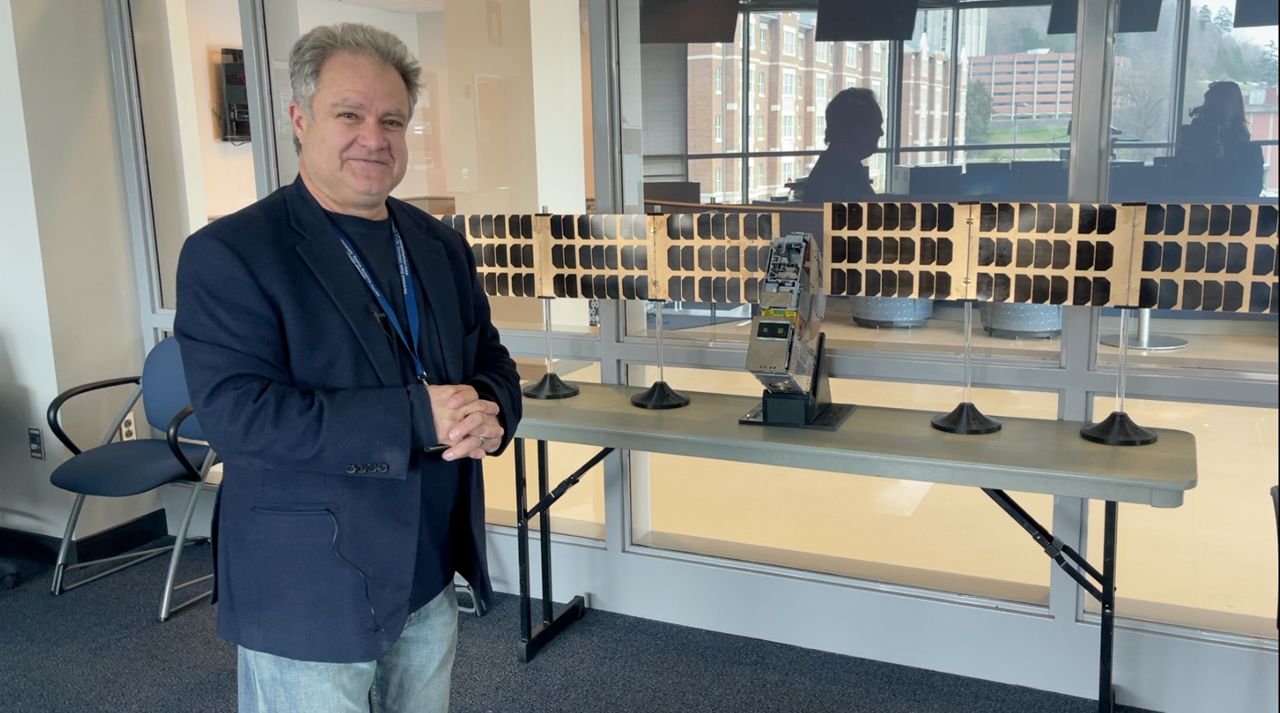MOREHEAD, Ky. — Students and faculty from Morehead State University are one step closer to seeing a long-awaited partnership with NASA come to fruition. Wednesday morning at around 7:30 a.m., the Artemis I mega moon rocket arrived at the launchpad ahead of its scheduled launch.
The satellite that Morehead State University students and staff built will head to the moon on the Artemis I, the most powerful spacecraft ever made.
What You Need To Know
- The Artemis I mega moon rocket arrived at the launchpad in Florida Wednesday morning
- It will launch on Aug. 29
- Morehead State University students and staff built a Lunar IceCube that will launch on the Artemis I with the mission of mapping out water on the moon
- The goal of the mission is to get humans back to the moon, and the findings from the satellite built at Morehead State University will play a role in that
NASA has big goals to get humans back to the moon, which hasn’t happened in 50 years. It also hopes to eventually make way for human exploration of Mars. The first step begins when the Artemis I launches later this month. The Lunar IceCube, engineered at Morehead State University, will play a major role in that.
Once launched, the Lunar IceCube will orbit the moon looking for water. Ben Malphrus, executive director of Morehead State University’s Space Science Center, said they know there is water on the moon. The Lunar IceCube will help determine how much, and exactly where, it is.
“To understand where water is on the moon is extremely important for future use of the moon, human use of the moon specifically,” Malphrus said.
Working on a NASA mission is nothing new for Morehead State students and staff. In fact, the university has taken part in launching seven satellites into space so far. This one has a different weight to it, though.
Malphrus has seen how the program has transformed over the past 32 years. While he is proud of all the missions students and staff there have taken part in, he says the Lunar IceCube is the flagship.
This will be the university’s first satellite to the moon. The others have been Earth orbiters.
“It’s the first wave of interplanetary small satellites in the history of the world, and we have one of them. We are really excited about this one,” Malphrus said.
Students at Morehead State University could get hands-on experience building the satellite, which is now with NASA. Once launched, their work will continue. About four hours after the launch, Morehead State students and staff will start collecting data from the Lunar IceCube and five other NASA satellites.
They can do that through a dish on campus. It allows them to send commands to the satellites in space, as well as collect data from them.
Chloe Hart was a student at Morehead State University, and now works there as a faculty member. She says this hands-on experience sets students above the competition when looking for jobs.
“I remember going to different conferences and talking about all of the experience that I have received and people being shocked that I am an undergraduate student and I am able to touch the equipment and the flight hardware that will be going to be going into space one day,” said Hart. “People are just blown away by the opportunities we are able to afford our students here.”
This program at Morehead State has 100% career placement among graduates.
Vice President of University Advancement, Rick Hesterberg, said some students and staff were affected by the recent floods in eastern Kentucky.
“This launch is serving as an inspiring event that folks in this area can take a lot of pride in,” Hesterberg said.
The Artemis team is targeting its first two-hour launch window from 8:33 a.m. ET to 10:33 a.m. ET on Monday, Aug. 29. There are backup launch windows on Sept. 2 and Sept. 5.



